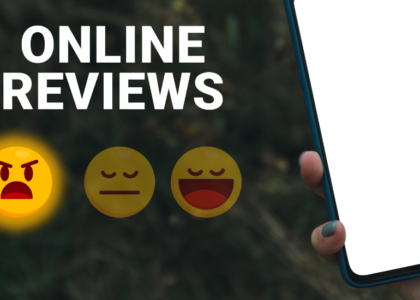Social Media Trends 2022
Information & Graphics Designed by Hootsuite.com
Trend 1: The Brand Strategy Trend Brands finally get community right (with the help of creators). Digital communities are only becoming more central to consumers’ lives and identities, and creators are the key to unlocking them. Brands that partner wisely with creators are connecting with new audiences, earning their trust, and gaining cultural capital.

Stop thinking about your followers as your community
A lot of small and midsized businesses make the mistake of thinking that all they need to do when it comes to online community building is get people to follow them. Assuming that a passive following is equal to an engaged, thriving, and loyal community does the power of social media a disservice. And it can
cloud your judgment of your product’s real value. Instead, seek out online communities that are active and engaged around interests relevant to your product category. If you make dishware, talk to home cooks. If you service cars, find auto clubs. By using creators to tap into these circles where you’re not well known and adding value there, you’ll reach new audiences, build cultural relevance, and learn more about your customers.
Support the growth of content creators in earnest
Last year, we wrote about how leading brands were focused on listening and finding their place in the conversation before making themselves heard online. This year, we’re taking that recommendation a step further. Not only should you be listening to what people are saying within the online communities you’re targeting—you should be actively supporting the content creators who are making those communities flourish.
This goes beyond handing out freebies and swag (although those are nice too). Build trust by investing in your creator partners, taking the lead in distributing their content, and actively amplifying their content on your channels. If people within the community see you as an active partner in supporting the creators they admire, they’ll be more likely to trust that you have their best interests at heart too. Then it’s just up to you to deliver.
Trend 2: The Social Advertising Trend Marketers get creative as consumers wise up to social ads. Consumers are holding brands to a higher standard when it comes to creativity in social advertising—but rewarding those that get it right. As marketers plan to spend more on social ads in 2022, they’ll have to work harder to create ads that mirror and enrich the distinct experience each social network offers.

Build social marketing teams with the intent to experiment
In 2022, we expect to see more niche networks pop up as consumers seek new experiences—and as developers and investors eye opportunities to build the next TikTok. To keep up with the changes in the social landscape, your organization must welcome and embrace experimentation. When hiring, look for people who understand specific platforms intuitively. And make sure to diversify the skill sets on your team, either with training or by hiring people who specialize in analytics, video, audio, or writing.
Choose the right social channels for your business goals
While less traditional social networks may be thriving, you shouldn’t completely abandon core networks like Facebook and Instagram. Consumers expect to find you there—and a strategic presence on a network that you know drives business results beats stretching yourself too thin across every network out there. But do seek out new strategic opportunities where you’re most likely to see the greatest ROI. Our research shows that small businesses in particular find niche networks more effective. In a survey we conducted with 800 small business owners, we found that 62% were active on Facebook, yet only 24% said it was highly effective. In fact, our survey found that the more established the social network was, the less effective small businesses rated it.
Accept that nailing attribution will take time, trial, and error
Attribution will only become more challenging as businesses try to understand the impact of their content on networks where benchmarks are less clear and analytics may be harder to come by. Over the long term, this will force marketers to become more strategic, more resourceful in gathering data, and more
adaptable to change. But when most businesses operate on quarterly cycles that ask practitioners to track and attribute every action to an equal and opposite (financial) reaction, getting buy-in to experiment with your social channel mix can be difficult. Instead of zeroing in on metrics, focus on shifting the internal
culture and mindsets of your marketing teams, embracing experimentation, and accepting that measurement may be murky and imperfect in the short term. New channels promise potential: the potential to impress customers with your ability to innovate, to beat your competitors to the punch, and to push your own creative boundaries. The reward in temporary imperfection outweighs the risk of missing your moment.
Trend 3: The ROI Trend Social quietly matures out of the marketing department. Having seen the value of social in marketing, business leaders are buffing up employee advocacy programs, mastering social listening to gather consumer insights, and looking to deliver the kind of impact they’ve seen social have on their marketing elsewhere in their organizations.

Create a better employee experience with advocacy tools
Help your employees feel more connected to your business and one another. Consider an employee advocacy tool like Hootsuite Amplify to empower employees to share your posts across their own social networks and increase internal awareness by sharing news across teams within your business.
Sharpen your strategy with deeper customer insights
Organizations that were extremely confident in measuring the ROI of social media were also more likely to use it to gather insights about their customers. If you’re looking to get more value from social this year, consider investing in a social listening service like Hootsuite Insights. Social listening gives brands an opportunity to track, analyze, and respond to conversations happening all over social. Find new customers, retain existing ones, discover what people are saying about your brand, and build sharper social strategies with immediate feedback.
Integrate your paid and organic social strategies
While they’re often pitted against each other, the truth is, having your paid and organic efforts work together can lead to amazing results. By playing to the strengths of one and filling the gaps with the strengths of the other, you’ll build a more holistic and effective social strategy. Make your paid strategy smarter by using your organic audience to help you figure out who to target with paid ads. Use retargeting ads to let your organic audience (your best customers) know whether you’re having a sale, changing operating hours, or adding new products to your shelves. Your paid ads can bring new customers in while your organic channels build community and push people further along the buying journey.
Trend 4: The Social Commerce Trend Social becomes the heart of the post-pandemic shopping experience. The era of social commerce is in full swing and the opportunity is only getting bigger. Competitive small businesses are finding a balance between social storefronts and bricks and mortar, while large brands test the outer limits of the online shopping experience.

Remove moments of friction
The easier you make the purchase process, the more likely your customers are to follow through. Ask yourself what simple things you can do to improve their experience with your brand, even on your existing social profiles. Before you take on any more work in maintaining something like a Facebook Shop, make sure you plug all of the gaps in your existing social points of presence—for example, by updating your business profile with basic information like your operating hours and location. Even if you aren’t ready to open a social storefront, you can promote sales, events, and discounts directly on your business pages. Add product descriptions, encourage reviews, and respond to publicly visible customer service inquiries.
Invest in your social storefront
Now that your business profiles are spotless, you’re ready to delve into the world of the online storefront. From Instagram to Facebook to Pinterest, there are plenty of options for you to sell products directly on social. Given the size of the social commerce opportunity, brands should invest as much energy and effort into their online storefronts as they would in keeping their brick-and-mortar locations tidy. Invest in photography, hire a writer to craft product descriptions, and put consideration into how you’re organizing your storefront. All of these efforts will impact consumer impressions of your brand. So put some energy into it and make sure that the way people experience your brand on social media is as close to the IRL experience as you can make it.
Personalize the shopping experience at scale
So you’ve cleaned up your business profiles and opened your social storefront, and now sales are booming—too fast, actually. In fact, you’re unable to focus on what’s happening in your physical store because you’re managing such a large volume of inquiries and customer service requests. Your next step is to personalize the shopping experience at scale by investing in conversational AI tools like Heyday by Hootsuite. Relieve yourself of the expectation that you’ll be able to manage everything yourself. With an AI-powered assistant at your disposal, you can manage all your customer touchpoints in one place, serve up instant product recommendations, and let bots handle routine inquiries while you take the complicated stuff. Now that’s a great experience.
Trend 5: The Customer Care Trend Social marketers rescue their brands from the customer service apocalypse. Amid halting global supply chains and staffing shortages, many businesses can expect an influx of not-so-happy customers in 2022. Meanwhile, demand for customer service over social has been surging. Social media managers now find themselves in an ideal position to play the hero and steer their organizations through the upheaval.

Give yourself a unified view of all your messaging channels
Whether you’re managing a crisis or simply trying to make sure customers’ needs are met on time, social customer care is the front line of your business. From fielding DMs on Instagram to handling public complaints on Twitter, managing all these inquiries across every single social channel that your business uses can quickly become a challenge. Get Hootsuite Inbox to help you monitor messages from different networks in a single view.
Make it easier for customer service and marketing to share information
Your customers don’t make the distinction between your customer support, marketing, and sales teams. To them, every interaction is just an experience with your brand. Make sure your marketing and customer service teams have clear lines of communication with one another so they can streamline common inquiries and mitigate issues in tandem. Invest in Sparkcentral by Hootsuite to tag inquiries by importance, delegate requests, and make sure the right teams are there to answer the right questions.
Invest in training and services for social media teams
From developing strategies to making standout content to resolving customer service requests and every little task in between, social marketers are expected to do it all. Invest in trusted training and services programs that will help your social marketers develop critical business skills, set themselves apart from
other marketers, and help them thrive within your business.




